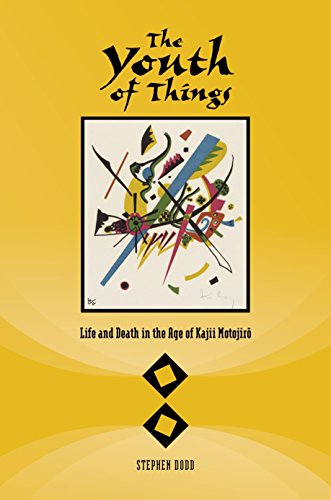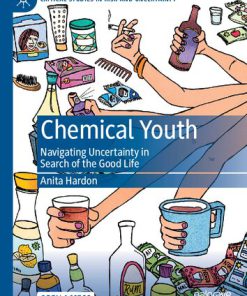The Youth of Things Life and Death in the Age of Kajii Motojiro 1st edition by Stephen Dodd isbn 0824867688 9780824867683
$50.00 Original price was: $50.00.$25.00Current price is: $25.00.
The Youth of Things Life and Death in the Age of Kajii Motojiro 1st edition by Stephen Dodd – Ebook PDF Instant Download/Delivery: 0824867688, 978-0824867683
Full dowload The Youth of Things Life and Death in the Age of Kajii Motojiro 1st Edition after payment

Product details:
ISBN 10: 0824867688
ISBN 13: 978-0824867683
Author: Stephen Dodd
When he died from tuberculosis at the age of thirty-one, Kajii Motojirō had written only twenty short stories. Yet his life and work, it is argued here, sheds light on a significant moment in Japanese history and, ultimately, adds to our understanding of how modern Japanese identity developed. By the time Kajii began to write in the mid-1920s there was heated debate among his peers over “legitimate” forms of literary expression: Japanese Romantics questioned the value of a western-inspired version of modernity; others were influenced by Marxist proletarian literature or modernist experimentation; still others tried to create a distinctly Japanese fictional style that concentrated on first-person perspective, the so-called “I-novel.” There was a general sense that Japan needed to reinvent itself, but writers and artists were at odds over what form this reinvention should take. Throughout his career, Kajii drew from these various camps but belonged to none of them, making his work an invaluable indicator of a culture in crisis and transition.
The Youth of Things is the first full-length book devoted to Kajii Motojirō. It brings together English translations of nearly all his completed stories with an analysis of his literature in the context of several major themes that locate him in 1920s Japan. In particular, Dodd links the writer’s work with the physical body: Kajii’s subjective literary presence was grounded first and foremost in his TB-stricken physical body, hence one cannot be studied without the other. His concerns with health and mortality drove him to play a central role in constructing a language for modern literature and to offer new insights into ideas that intrigued so many other Taishō intellectuals and writers. In addition, Kajii’s early years as a writer were strongly influenced by the cosmopolitan humanism of the White Birch (Shirakaba) school, but by the time his final work was published in the early 1930s, an environment of greater cultural introspection was beginning to take root, encapsulated in the expression “return to Japan” (nihon kaiki). Only a few years separate these two moments in time, but they represent a profound shift in the aspirations and expectations of a whole generation of writers. Through a study of Kajii’s writing, this book offers some sense of the demise of one cultural moment and the creation of another.
The Youth of Things Life and Death in the Age of Kajii Motojiro 1st Table of contents:
Chapter 1: Kajii Motojiro and the Modernist Moment
- Overview of Kajii’s Life and Literary Career
- Context of Early 20th Century Japan: The Meiji and Taisho Eras
- The Rise of Modernism and Its Influence on Literature
- Kajii’s Place within Japanese Literary Movements
Chapter 2: Themes of Youth and Illness
- The Representation of Youth in Kajii’s Works
- The Interconnection Between Health, Illness, and Identity
- The Role of Disease in Modernist Literature
- Psychological and Physical Suffering in Youth
Chapter 3: Death and the Aesthetics of Dying
- The Role of Death in Kajii’s Fiction
- The Aestheticization of Illness and Mortality
- Disease as Metaphor: The Body in Decay
- Literature as a Means of Confronting Death
Chapter 4: Kajii’s Short Stories and Narratives of Loss
- Close Readings of Key Short Stories
- Storytelling Techniques: Fragmentation, Symbolism, and Modernist Forms
- How Kajii Depicts Emotional and Physical Disintegration
- The Theme of Loss in Relationships and Society
Chapter 5: Nature, Urbanization, and the Modern City
- The Contrast Between the Rural and the Urban in Kajii’s Work
- Urban Alienation and the Effects of Modernization
- Nature as Both Healing and Destructive Force
- Environmental and Social Change in Early 20th-Century Japan
Chapter 6: The Aesthetic of the Sickroom: Death and Desire
- Symbolism of the Sickroom in Kajii’s Writing
- Desire and Repression: The Intersection of Life and Death
- The Sickroom as a Metaphysical Space: Isolation and Reflection
- The “Youth of Things”: Fragility and Fleetingness
Chapter 7: Kajii’s Legacy in Postwar Japanese Literature
- The Influence of Kajii on Later Writers and Artists
- Postwar Reflections on Youth, Death, and Illness in Literature
- Kajii’s Relevance in Contemporary Japanese Culture
- Reception of Kajii’s Works Outside Japan
Chapter 8: Conclusion: The “Youth of Things” and Its Contemporary Resonance
- Kajii’s Exploration of Modernity, Suffering, and Death
- The Enduring Legacy of Youth in Literature
- Reflections on Life, Death, and Illness in the 21st Century
People also search for The Youth of Things Life and Death in the Age of Kajii Motojiro 1st :
gracefully surrendering the things of youth
things that affect the youth of today
the soul of things memoir of a youth interrupted
surrendering the things of youth
what is the secret of youth
You may also like…
Politics & Philosophy - Anthropology
Meanings and other things : themes from the work of Stephen Schiffer 1st Edition Ostertag
Politics & Philosophy
Politics & Philosophy
Chemical Youth: Navigating Uncertainty in Search of the Good Life 1st Edition Anita Hardon
Politics & Philosophy - Social Sciences
The Death and Life of the Urban Commonwealth 1st edition by Margaret Kohn 0190606626 9780190606626
History - European History
Endkampf Soldiers Civilians and the Death of the Third Reich Fritz Stephen
History - American Studies
Earth Sciences - The Environment
Choked Life and Breath in the Age of Air Pollution Beth Gardiner












